- Главная
- Разное
- Бизнес и предпринимательство
- Образование
- Развлечения
- Государство
- Спорт
- Графика
- Культурология
- Еда и кулинария
- Лингвистика
- Религиоведение
- Черчение
- Физкультура
- ИЗО
- Психология
- Социология
- Английский язык
- Астрономия
- Алгебра
- Биология
- География
- Геометрия
- Детские презентации
- Информатика
- История
- Литература
- Маркетинг
- Математика
- Медицина
- Менеджмент
- Музыка
- МХК
- Немецкий язык
- ОБЖ
- Обществознание
- Окружающий мир
- Педагогика
- Русский язык
- Технология
- Физика
- Философия
- Химия
- Шаблоны, картинки для презентаций
- Экология
- Экономика
- Юриспруденция
Что такое findslide.org?
FindSlide.org - это сайт презентаций, докладов, шаблонов в формате PowerPoint.
Обратная связь
Email: Нажмите что бы посмотреть
Презентация на тему USA and Canada
Содержание
- 2. Content USA and Canada1. Geography2. History3. Administrative building4. Population5. Medical and sanitary condition
- 3. USA
- 4. Geography The largest country in the Western
- 5. HistoryIndigenous Indians lived in the modern United
- 6. Administrative buildingThe US government is divided into
- 7. House of Representatives
- 8. PopulationUSA occupies the 4th place in the
- 9. Increasing population from 1790 to 2000
- 10. Medical and sanitary conditionMedical care is mainly
- 11. Medical and sanitary condition
- 12. Canada
- 13. GeographyThe area of the land is 9,948,670
- 14. PopulationBased on the 2006 census, the Canadian
- 15. Medical and sanitary conditionIn Canada in 1969,
- 16. Скачать презентацию
- 17. Похожие презентации
Content USA and Canada1. Geography2. History3. Administrative building4. Population5. Medical and sanitary condition



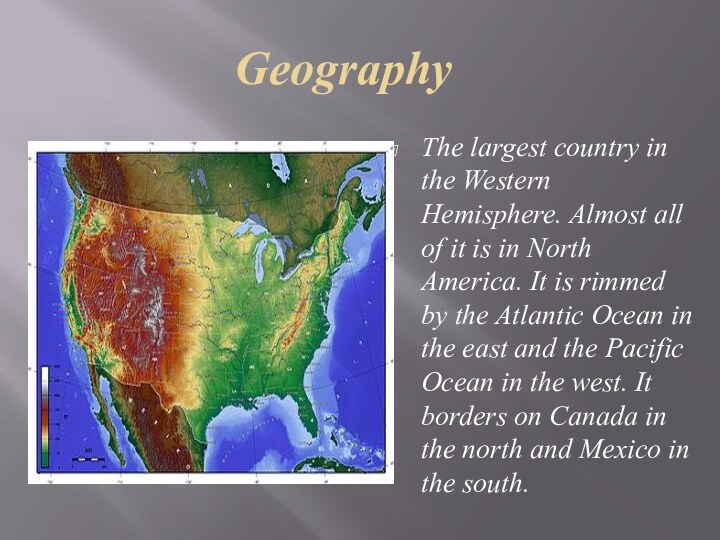





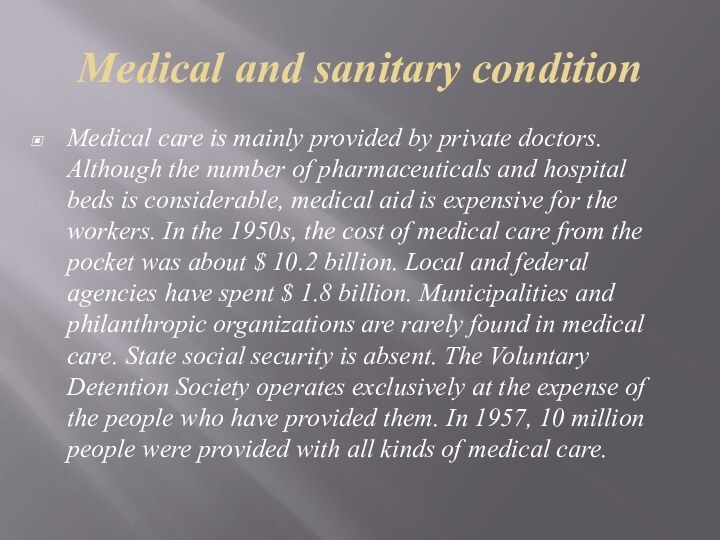

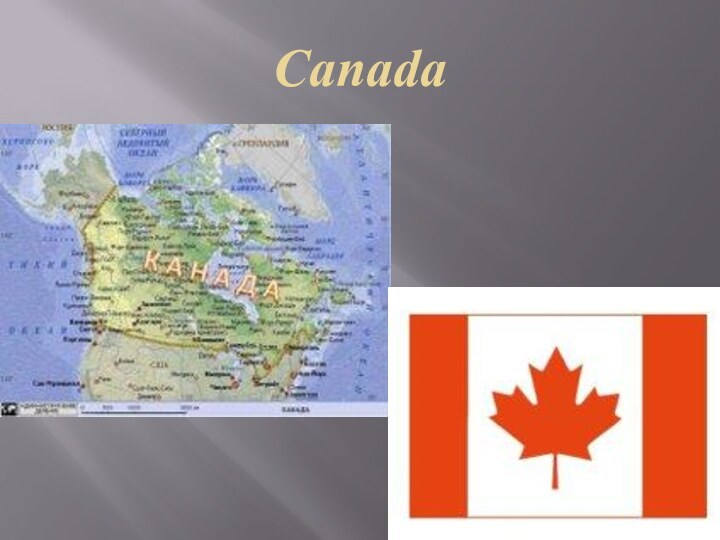
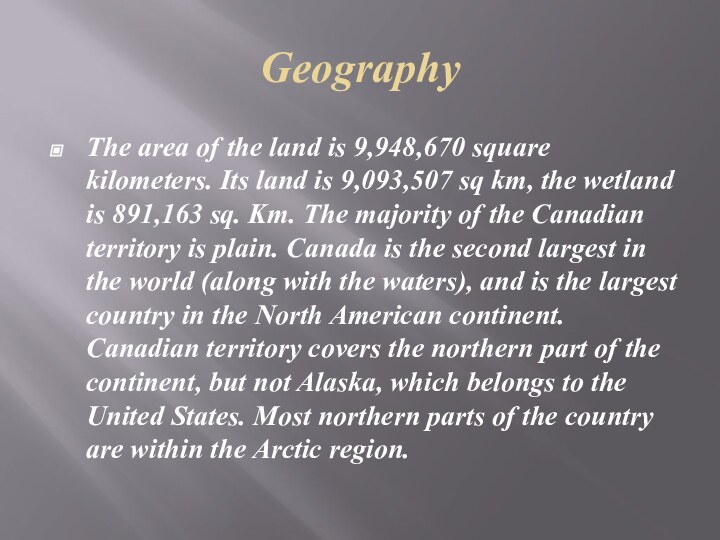
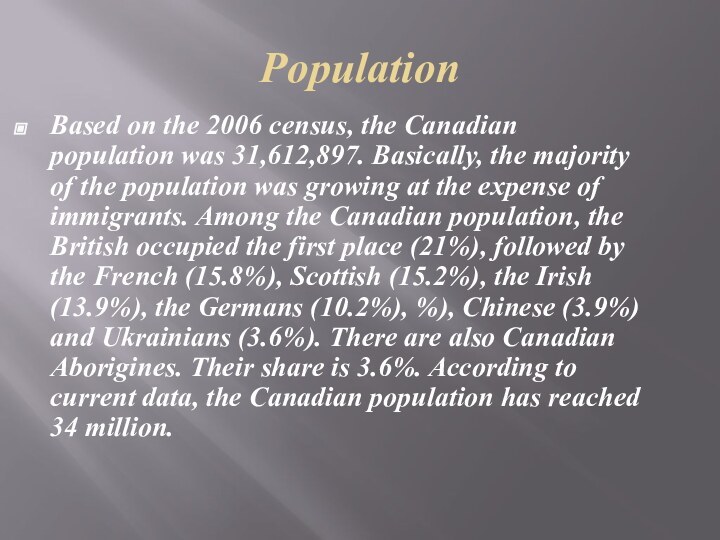
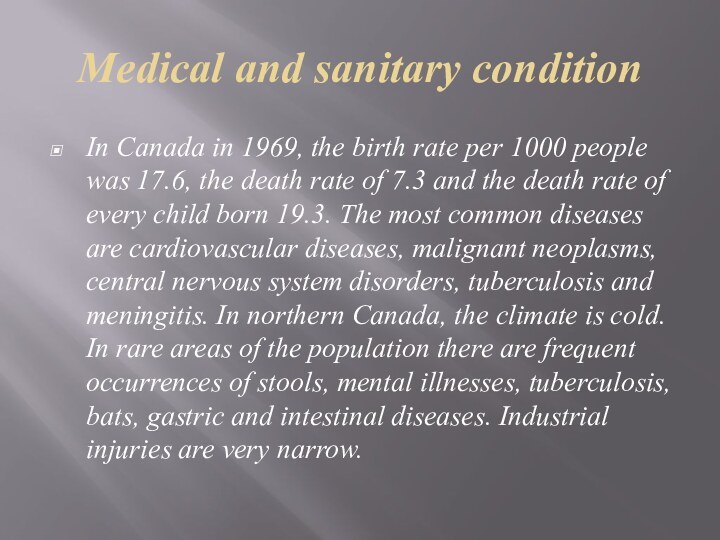

Слайд 4
Geography
The largest country in the Western Hemisphere.
Almost all of it is in North America. It
is rimmed by the Atlantic Ocean in the east and the Pacific Ocean in the west. It borders on Canada in the north and Mexico in the south.
Слайд 5
History
Indigenous Indians lived in the modern United States.
Christopher Columbus After the discovery of America (1492-1503) In
the 16th century, England, Spain, the Netherlands, France, and Sweden began colonizing North America. By the 60's of the 18th century, Britain almost invaded North America. At the beginning of the 17th century, slaves from Africa began to use heavily in America. Enhancement of colonialism caused a war on independence (1775 - 83).
Слайд 6
Administrative building
The US government is divided into three
points:
Legislator: The US Parliament is called the Congress. The
Congress consists of two chambers, the Senate and the House of Representatives, which work on a regular basis.Executive: The US President is the head of the state, the chief military commander, who will have the right to cancel the bill
Court: Supreme Court and federal courts
There are two major parties in the United States:
Democratic Party - 1824 created. John Kennedy, Bill Clinton, Barack Obama are members of this party.
Republican Party - 1854 created. George W. Bush, Ronald Reagan, are members of this party.
Слайд 8
Population
USA occupies the 4th place in the world
by population (after China, India and Russia). The main
ethnic origin is caused by the interference of Americans from different European countries (from the first half of the 17th century mainly to Englishmen, Irish, French, Dutch, etc.). Since the mid-19th century, most immigrants have come from Ireland, Germany, Scandinavia, and 80's in the 19th century from Italy, Austro-Hungarian, Russia, South and Eastern Europe. In total, 64 million immigrants from Europe, Latin America, Asia and Africa immigrated to the United States from 1790 to 1994. That's why the US is sometimes called the immigrant nationality.August 1 According to the first census of August 1, 1790, there are 3.9 million people in the United States.
1915 this figure was 100 million.
In 1967, the population exceeded 200 million.
On October 17, 2006, the population census was born in the United States at 7-46 million 300 million inhabitants.





























